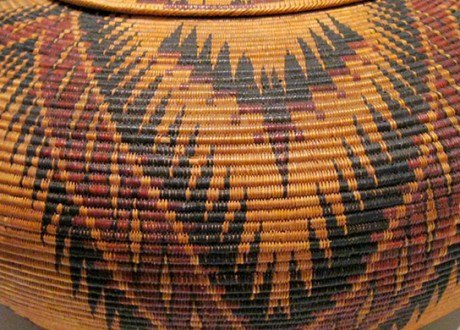Spectacular Native American Objects
The iconic image of a North American Indian on horseback, adorned by a feathered headdress, is deeply rooted in contemporary American collective memory. Although this image is commonly recognizable, it is in fact a generalization resulting from the combination of a handful of characteristics taken from only a few of the hundreds of indigenous cultures, mostly of the Great Plains of the United States. This selection from the Taylor Museum collection displays works not only from Plains Indians, but also features spectacular Native American objects from cultures of the Great Lakes, Southwest, and California. The exhibition includes characteristic war bonnets and animal hide clothing, but also traditional baskets alongside many examples of European influence on native peoples, all essential components in Native American history.
The Fine Arts Center’s collection of Native American works includes some of the finest cultural artifacts created by tribal groups inhabiting the central states of North America. According to some scholars, ancestors of Native American tribal groups migrated from Asia as many as 40,000 years ago, but the arrival of European explorers in the 16th and 17th centuries exerted profound influence on the artistic and cultural traditions that remain engrained in contemporary society. The reintroduction of horses by Spanish conquistadors altered native culture, and the animals became a significant factor of social importance, medium of exchange, and increased efficiency in hunting large game. Through European trade, glass beads were quickly adopted as an adornment for clothing and metal components were incorporated into traditional tools and weapons. Examples of intricate bead work and the use of metal can be seen in many works currently on display. Basketry is one of the oldest known Native American crafts, preferred over pottery by migratory groups due to ease of portability.




